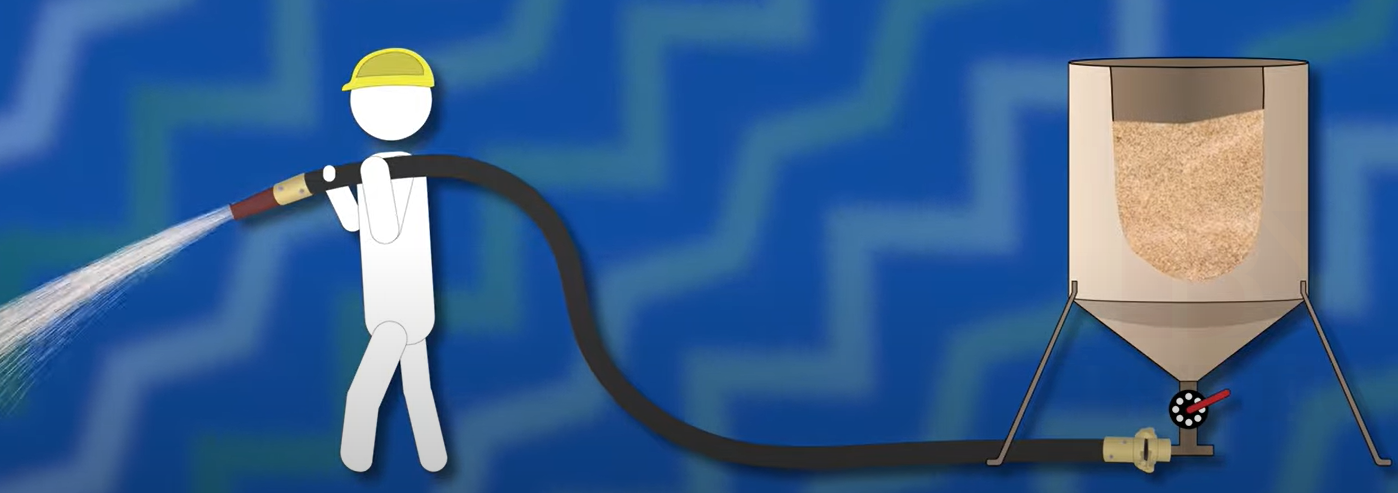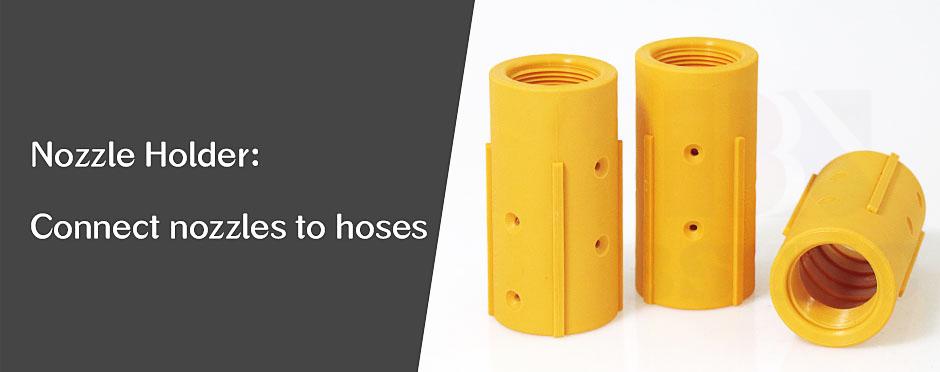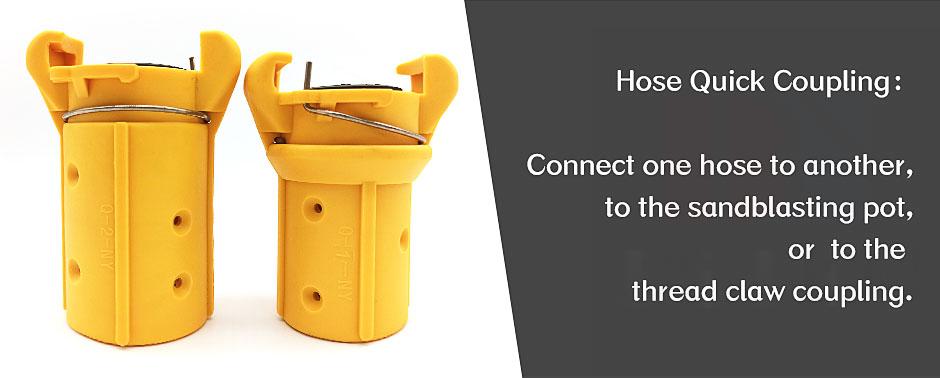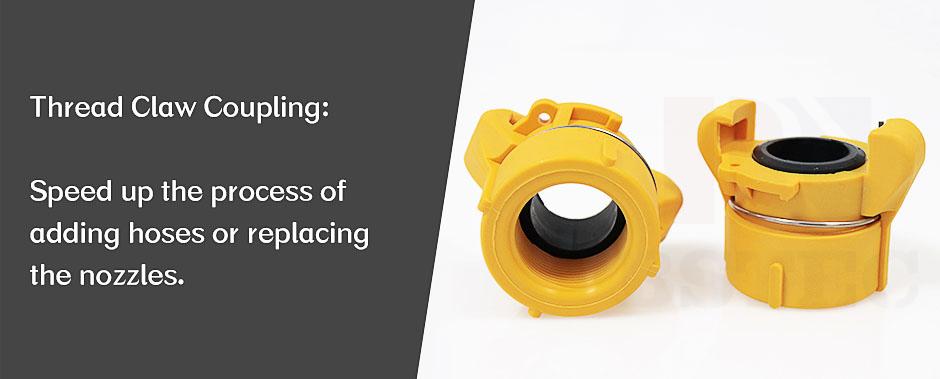Learn More About Sandblast Couplings and Holders
Learn More About Sandblast Couplings and Holders
Each part of sandblasting equipment is connected through hoses. The tightness of the connection between hoses will affect the quality of sandblasting and even the safety of operators.
Coupling is an important tool for hose connection. The coupling means the matching of the two items. If you match them wrongly, there will appear corresponding signs. If the abrasive flow is weak, the connection between the blasting pot and the hose or between one hose and another hose may be poor. You should check all hoses and connections for leaks before taking a project. With blasting equipment, any form of leakage will reduce the efficiency of the project, as well as the leaked parts will wear out quickly. Therefore, once you find a leak, please consider replacing the appropriate new couplings to improve the work efficiency.

Here are the couplings and holders used in sandblasting. This article will introduce them to you in detail.
1. Nozzle Holder

Connect a nozzle to a hose by the nozzle holder to ensure a secure connection between them. The holders are female threaded and can accommodate the male threaded end of the nozzle to achieve a seamless fit. For different hoses, holders of corresponding sizes are available. These couplings will be sized for each different hose OD ranging from 33-55mm. We offer couplings of various materials, including nylon, aluminum, and cast iron. Additionally, we recommend that you choose couplings of different materials from the nozzle threads, as this can prevent them from sticking together during sandblasting. For example, nylon nozzle coupling can be selected to connect with an aluminum threaded nozzle.
2. Hose Quick Coupling

The hose quick couplings have a variety of applications, including connecting one hose to another, connecting the hose to the sandblasting pot, or connecting the hose to the thread claw coupling. We provide various hose coupling sizes according to different hose OD ranging from 33-55mm.
3. Thread Claw Coupling

When different jobs require hoses of different lengths or nozzles of different sizes, you can use thread claw couplings to achieve it. It can speed up the process of adding hoses or changing the nozzles.
Add hose:
Usually, your hose is with a hose coupling at one end and a nozzle holder at another end. If you want to increase the length of the hose, you need to increase the hose with hose coupling at both ends. Or you can replace hose coupling with thread claw coupling to connect. You would have to use a hose with two hose couplings (or thread claw coupling) to go from the pot to the hose with hose coupling (or thread claw coupling) and nozzle holder. Note that no matter how many hoses you want to add, which can achieve as long as existing thread claw couplings.
Replace nozzle:
Get a thread claw coupling and attach it to each of your nozzles. If you use a nozzle that has the same threaded material as the nozzle holder, they may stick together during sandblasting. However, hose couplings and thread claw couplings will not meet this situation. You don't need to worry about the risk that the nozzle can't be unscrewed and replaced. You can also easily attach any of your nozzles to any of your hoses because the thread claw coupling pairs with the hose coupling. Just push and turn, and you have a new nozzle on your hose.
4. Threaded Tank Coupling
The threaded tank coupling looks like thread claw coupling. The difference is the NPS (national pipe straight) threads instead of the NPT (national pipe taper) thread. Therefore, threaded tank coupling and thread claw coupling can’t replace each other for the distinct thread.
For more information of sandblast nozzles and accessories, welcome to visit www.cnbstec.com













